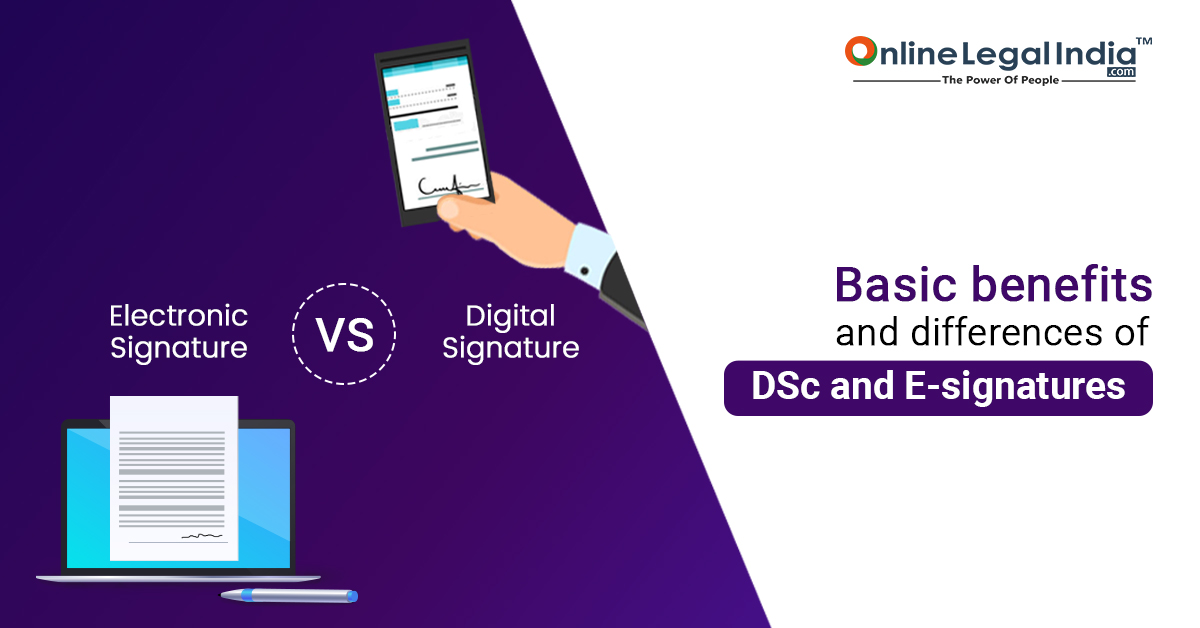Food License Apply: Its process, Fees and Benefits
15 Jan, 2026

 By Online Legal India
Published On 19 Aug 2022
Updated On 19 Feb 2025
Category Digital Signature Certificate
By Online Legal India
Published On 19 Aug 2022
Updated On 19 Feb 2025
Category Digital Signature Certificate
The use of signatures has given people a clear sense of who they are and made it possible for businesses and other people to operate more quickly while keeping up with evolving technology. The importance of signatures in helping people make decisions and give consent a far higher value is undeniable. In the past, each person or the designated signing had to read the document in its entirety before giving his or her consent. The organisations have to overcome enough obstacles as a result to follow the signatory's pace and work within his or her schedule. Authorised Signatory may not be present at a specific location but may still give his approval. Indeed, his blessing has come from technology.
In 1998, the United Nations noted that as the industrial era advanced, it had become increasingly important to create a legal framework for e-signatures due to the rise in online transactions in recent years. The creation of cyber laws was deemed to be urgent given the strict laws governing e-signature.
A person's identity is electronically represented by an electronic signature, which serves as a proof of their consent and agreement to the facts of the signature. Overall, the signature constitutes acceptance by the signer to the written form of the same electronically. Make sure it is coming from the authorised signatory and that there have been no changes made to the document.
A person's signature serves as a crucial and symbolic expression of their identity. The importance of a person's signature in the legal system and during transactions cannot be overstated. A person's signature on a piece of paper indicates that they have carefully read the entire thing, checked the facts, are aware of its contents, and are thereby endorsing it to the best of their knowledge.
A signature is important because it is seen as a sign that an offer has been accepted in accordance with contract law. Due to technological innovation, the traditional form of signatures has undergone significant change. The risk of data hacking has increased along with the use of online transactions and emails. As a result, the idea of electronic signatures has gained some significance.
An electronic signature is more of a consent to the delivered document than it is a declaration that its contents are true. It may also refer to a basic graphic that is attached to a document in order to support its text or to show that the relevant party has given its approval. Unlike a digital signature online, it is more easily altered or incorrectly constructed. Electronic signatures make it difficult to confirm the time and location of the signing; in some cases, another person may sign the given documents without being recognised. Additionally, applying Audit Logs to electronic signatures is difficult.
On the other hand,online digital signatures are more secure and difficult to tamper with. The digital signature online appears as an invalid signature if any changes are made to the document and it is sent back to the original signer. In contrast to an electronic signature, a physical signature requires a unique passkey that can only be given by the signer to the intended receiver. In the event that there is a disagreement between the parties, the signatures offer the time and stamp, which are highly important to show in court. In comparison to an electronic signature, it provides a highly imprecise identity while also disclosing the identities of the persons.
Unsecured Signature
There are affixations that are marked at the conclusion for reference because electronic signatures tend to be more unsafe. However, as was already mentioned, they are easily altered and don't really focus on the identity's legitimacy. The types of electronic signatures are as follows:
Email Signature– Anyone can easily fake someone's name or symbol by simply entering it at the end of an email or by sending a message on letterhead.
Web Based Signature– In many organisations, the Company assumes many roles in relation to the activities carried out in the Organisations; as a result, the organisation may fall victim to web-based clickwrap contracts, where acceptance is shown by the simple click of a button. Even if the party was deceived, such signatures bind them.
The expansion of increasing online transactions has given rise to a wide range of cybercrime, from deception to hidden identity. Because of this, digital signatures online are seen as being more rigorous forms of signatures that also secure the sender's identity. There are also more sophisticated solutions to stop the threat posed by electronic signatures.
The expansion of increasing online transactions has given rise to a wide range of cybercrime, from deception to hidden identity. Because of this, digital signatures are seen as being more rigors forms of signatures that also secure the sender's identity. There are also more sophisticated solutions to stop the threat posed by electronic signatures.
Secured Signature
This includes the signatures which are digitally secured and also which have more legal weightage.
Digital Signature
“According to section 2(1)(p) of the Information Technology Act, 2000 digital signature means the authentication of any electronic record by a person who has subscribed for the digital signature in accordance with the procedure mentioned under section 3 of the same act.”
“Section 5 of the Information Technology Act, 2000 gives legal recognition to digital signatures.”
Usage of Digital Signature
|
SL. No. |
Electronic Signature |
Digital Signature |
|
1. |
Section 2(1)(ta) of the Information Technology Act of 2000 has a definition of it. |
According to Section 2(1)(p) of the Information Technology Act of 2000, it has been defined. |
|
2. |
It is technologically agnostic, meaning that no particular technological procedure needs to be used to establish an electronic signature. |
It adopts a method dependent on the technology used, such as using hash functions. |
|
3. |
It can be made by utilising a variety of currently used technologies, such as uploading a photo of your signature. |
It uses public key cryptography, which requires a pair of keys—a private key for encryption and a public key for decryption—that are calculated using a hash function, to sign up for a specific message. |
|
4. |
It may take the form of a code, a fingerprint, a name put at the conclusion of an email, or even a digital signature in the form of an attachment. |
It entails the use of a two-way protection mechanism with a cryptographic technique for producing the signature. |
|
5. |
It is not as trustworthy as a digital signature. |
In comparison to an electronic signature, it has a higher level of legitimacy. |
|
6. |
The identity of the signer is used to confirm it. |
It has a digital 10 verification that is based on certificates. |
|
7. |
It is used to validate documents. |
It is used as a means for securing a document. |
|
8. |
It has no expiration or validity period. |
It is valid for up to a maximum of three years. |
|
9. |
It is easily vulnerable to tampering. |
It is more secure and highly reliable. |
By producing a digital signature, which is a mathematical function of the message content, it is possible to authenticate an electronic record. Such signatures are developed and validated by the discipline of applied mathematics known as cryptography. By substituting the original data with a transformed version that can be reconverted to disclose the original data only to someone who has the right key, it is used to secure the secrecy and authentication of the data.
Encryption: Transformation of a plain message into an encrypted text.
Decryption: The conversion of the original message's text into ciphertext.
Globally, digital signatures are growing in popularity. The acquisition and application of digital signatures are governed by a structure in nations that permit their usage. Nevertheless, the method of acquisition is the same wherever you are from. Qualified individuals produce and issue digital signatures. Anyone who wants a digital certificate must obtain it from a certifying authority in order for it to be legitimate (CA).
A type of trust service provider known as the Certifying Authority (CA) is a third-party institution that is respected and recognised in a nation. It has the authority to grant citizens digital signatures. These CAs are subject to rules and regulations that they must abide by in order to function.
Verification of Digital Signature
The recipient receives the original message and the digital signature. After this, there are two steps which need to be followed:
Rule 5 of the Information Technology (Certifying Authorities) Rules, 2000, explains the method of verification of digital signature as:
By using the public key and the new hash result, one can verify a digital signature by computing a new hash result of the original electronic record using the same hash function that is used to establish a digital signature.
Problems With Digital Signature
Conclusion The use of digital signatures instead of traditional signatures has significantly expanded with technological improvement. The Information Technology Act of 2000 goes into great detail on the idea of a digital signature, the organisations that have the authority to issue digital signature certificates, and the situations that call for the affixation of a digital signature.